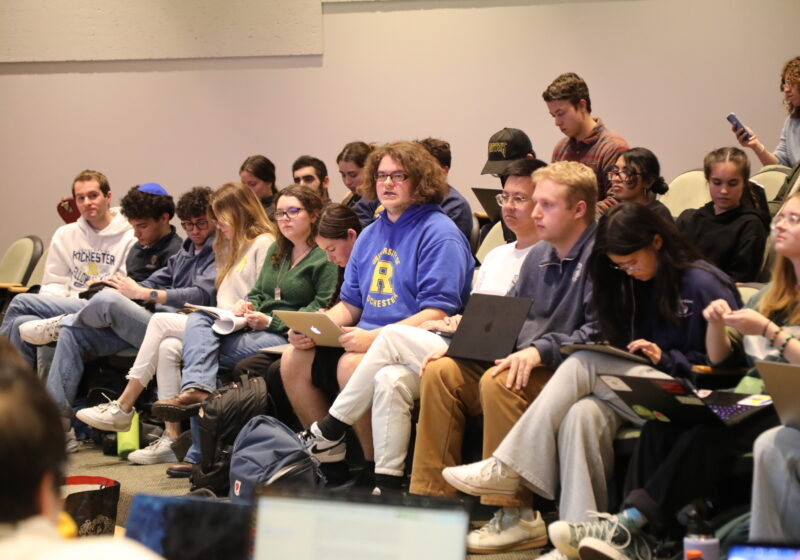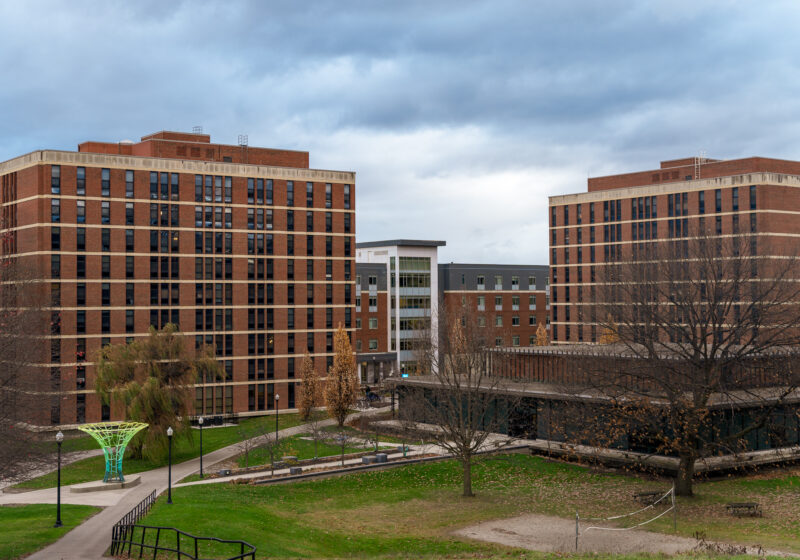In “The Pale King,” David Foster Wallace says: “This terror of silence with nothing diverting to do. I can’t think anyone really believes that today’s so-called ‘information society’ is just about information. Everyone knows it’s about something else, way down.”
The “something else” to which Wallace refers is distraction, the very human (and, as Wallace argues, very American) tendency to value entertainment above all else, for fear of succumbing to the thoughts we have when we sit alone. As long as we’re entertained, he argues, we can stave off thinking about our own mortality.
“The Big Short,” Adam McKay’s first foray into the dramatic, tells the story of the market crash of 2007/2008. While points are made about our capacity for greed and our ability to justify deceiving millions of people, the most salient one, reflected in everything from the star-studded casting to the breakneck speed of the dialogue and camerawork, is about what we choose to think.
Peppered throughout the story of corporate lunacy and government complicity are complex economic concepts explained through celebrity cameos. Margot Robbie explains mortgage bonds and their historical context while sipping a glass of white in a hot tub. Selena Gomez describes the nuances of risk management. Anthony Bourdain breaks down CDOs.
And if that sounds like a lot, just take a look at the cast.
Steve Carell. Brad Pitt. Christian Bale. Ryan Gosling. The list goes on and on, but that seems to be the point. Yes, the actors are there because they’re good at what they do, but this speaks to what it will take to get people to watch a painful movie that spends most of the time getting into the nitty-gritty of subprime loans. It’s the Kony 2012 conundrum (konundrum?): How entertaining does a thoroughly unamusing problem have to be for people to care about it? McKay recognizes this issue, and rather than wallow in it, he’s decided to get pragmatic. Do you need to see the star of “The Notebook” speaking directly into the camera to get angry about the recklessness of the big banks that led to one of the most catastrophic economic collapses since the Great Depression? Then so be it, as long as you leave the theater incensed.
Anger drives the movie forward, too. Steve Carell’s Mark Baum is positively Vesuvian, spending most of the film finding new ways to be outraged at new smug irresponsibility. He and his wife (played by the ever-dependable Marisa Tomei) talk about his anger like it’s sitting in the room with them, fighting against Baum’s past indiscretions and current insecurities. In a film full of reprehensible (but undeniably funny) people, Baum’s flailing attempts at justice and responsibility are all the audience has to hold on to. Ben Rickert (Brad Pitt) dampens the enthusiasm of two young investors who feel they’ve made a sure-thing bet by reminding them that “every one percent unemployment goes up, 40,000 people die. Did you know that?” That’s the point when you realize you’ve been rooting for the to market collapse, too, just to prove these few prescient investors correct. It’s around here that a Murakami quote pops up: “Everyone, deep in their hearts, is waiting for the end of the world to come.”
The titular “big short” is a bet made by Baum and a few other investors against the strength of the housing market. The glass-eyed former doctor Michael Burry (played with characteristic intensity by Christian Bale) is the first to spot the coming storm, and as people laugh in his face left and right—people who lied and deceived and profited from an oppressive system—the collapse starts to feel more like redemption instead of crucifixion.





